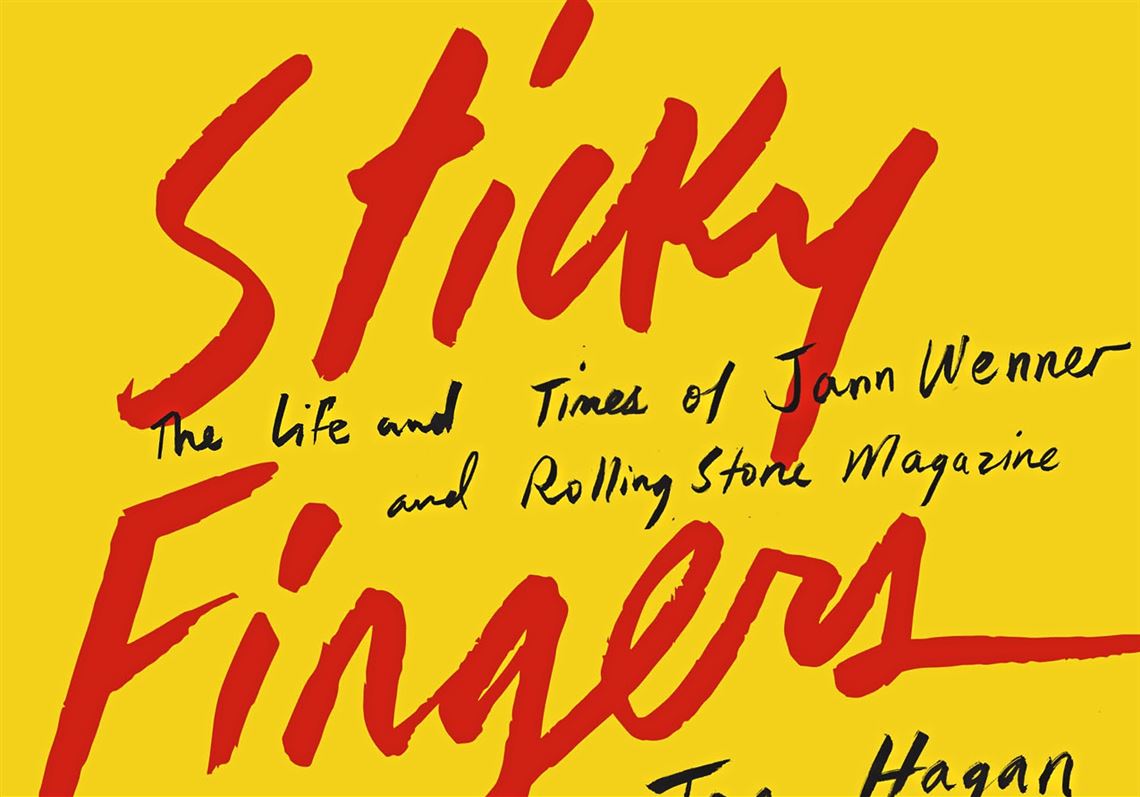About 50 years ago, Rolling Stone magazine jump-started today’s celebrity-obsessed pop culture. Capitalizing on the economic clout of rock ’n’ roll, the magazine was a talisman; its record reviews, profiles and political coverage a virtual guidebook for that coveted demographic of 18-to-34 years old. Today, however, media is fragmented. The record industry that fueled the publication no longer exists, and taste has gone far beyond the classic rockers Rolling Stone continues to cover.
Joe Hagan’s “Sticky Fingers: The Life and Times of Jann Wenner and Rolling Stone Magazine” (Alfred A. Knopf, $29.95), which takes its name from a 1971 Rolling Stones album, tracks that evolution in this insider biography of Rolling Stone founder Jann Wenner and his magazine. One of the sub-themes is Mr. Wenner’s virtual lover’s quarrel with Rolling Stones kingpin Mick Jagger over use of their almost-shared name. Another is the narcissism that rules Mr. Wenner and the celebrities who capture his attention — celebrities he wants to outdo.
Mr. Wenner’s homoerotic fixation on Mick Jagger (and, perhaps, on John Lennon, whose relationship with him was similarly contentious) pops up frequently in this anecdote-rich book. Exhaustively researched and startlingly candid, “Sticky Fingers” proves flattery works and sycophancy pays off. Through interviews with numerous stars, mostly white men, this shows that for coverage in Rolling Stone, everybody who wanted to be somebody, even those who were somebody already—including such moral role models as Bono and Bruce Springsteen—pandered to Mr. Wenner.
Fans of dish will enjoy Mr. Hagan’s stories of legendary Rolling Stone writers such as Hunter S. Thompson, Joe Eszterhas and David Felton. All contributed to the white-male-dominated rock ’n’ roll culture Mr. Wenner shaped so profoundly from the mid-60s through the ’80s, when time and changing economics finally—if only temporarily—blunted the magazine’s impact.
Readers may wonder how Jann Wenner, a key associate like photographer Annie Leibovitz and celebrities like Jagger, Lennon, John Belushi and the strenuously promiscuous Diane and Egon von Furstenberg survived their tumultuous times. The drug use was prodigious, particularly of cocaine before AIDS made it more fearful than fun; the self-indulgence was stunning. “Sticky Fingers” is both a vivid ode to wretched excess and a tribute to durability.
Mr. Hagan did not grant Mr. Wenner “approval over the material,” the author told Entertainment Weekly. His book does not sugarcoat Mr. Wenner’s libertine lifestyle, his mercurial nature, his unabashed self-love, and his editorial talent. Far more often than not, Mr. Wenner mined authorial gold, giving unfettered voice to writers such as Hunter S. Thompson, Jon Landau, Lester Bangs, Greil Marcus and Tom Wolfe. Even in its later years, Rolling Stone made journalistic history in dethroning Gen. Stanley McChrystal in 2010, and it continues that tradition today with Matt Taibbi’s scabrously entertaining political coverage.
Yet there have been missteps, like the scandalously under-vetted story about an alleged rape of a University of Virginia coed in 2014 and Sean Penn’s pay-for-play interview with Mexican drug mogul El Chapo in 2016.
A San Francisco-area native, Mr. Wenner is 71 and the head of two families (one with the former Jane Schindelheim, who has remained a business partner through thick and thin, the other with a man named Matt Nye). He’s more subdued than he was, and his son, Gus, continues to refresh and extend his brand. Mr. Wenner has relaxed into his fame.
Jann Wenner, who seems all appetite, is best at creating celebrity and then trading on it. He commercialized that talent in a singular magazine that blasted the establishment even as it became establishment itself. Joe Hagan’s book, occasionally giddy but never fawning, puts Jann Wenner in his rarefied, wealthy and fundamentally lonely place.
Carlo Wolff is a freelance writer from Cleveland.
First Published: October 30, 2017, 12:28 a.m.

















